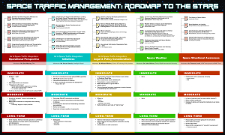Location
Jim Henderson Welcome Center, Embry-Riddle Aeronautical University - Daytona Beach
Start Date
6-11-2014 9:00 AM
End Date
6-11-2014 9:30 AM
Abstract
Space Florida was created to strengthen Florida’s position as the global leader in aerospace research, investment, exploration and commerce. As Florida’s spaceport authority and aerospace development organization, Space Florida is committed to attracting and expanding the next generation of space industry businesses. The future of successful spaceports will be dependent on a balance and co-location of commercial, civil, and defense activities in aviation and space flight operations. Operations may include: general aviation; horizontal rocket powered liftoff (suborbital) and glided landings; traditional vertical rocket launches and newly evolving rocket stage return; aviation systems with unique commodities for air launch payloads; unmanned aircraft systems; and localized vertical take-off and landings for technology development or suborbital flights. Spaceports require necessary conditions in the early stages of master plan development to address a diverse multi-modal transportation portfolio, which includes multiple regulation regimes for airspace and land use that directly impact potential customers. An example of a successful multi-user commercial spaceport would be one that could spread their operations costs across several customers. Spaceports can be built to suit at a heavy price or existing infrastructure can be leveraged and readapted to fulfill user needs. Florida case studies will include the Shuttle Landing Facility at Kennedy Space Center and Cecil Spaceport in Jacksonville, to see how they qualitatively rank against the necessary conditions along with Space Florida’s role in preparing those locations for future business.

Keynote - Mark Bontrager - Necessary Conditions and Infrastructure for a Successful Multi-User Spaceport
Jim Henderson Welcome Center, Embry-Riddle Aeronautical University - Daytona Beach
Space Florida was created to strengthen Florida’s position as the global leader in aerospace research, investment, exploration and commerce. As Florida’s spaceport authority and aerospace development organization, Space Florida is committed to attracting and expanding the next generation of space industry businesses. The future of successful spaceports will be dependent on a balance and co-location of commercial, civil, and defense activities in aviation and space flight operations. Operations may include: general aviation; horizontal rocket powered liftoff (suborbital) and glided landings; traditional vertical rocket launches and newly evolving rocket stage return; aviation systems with unique commodities for air launch payloads; unmanned aircraft systems; and localized vertical take-off and landings for technology development or suborbital flights. Spaceports require necessary conditions in the early stages of master plan development to address a diverse multi-modal transportation portfolio, which includes multiple regulation regimes for airspace and land use that directly impact potential customers. An example of a successful multi-user commercial spaceport would be one that could spread their operations costs across several customers. Spaceports can be built to suit at a heavy price or existing infrastructure can be leveraged and readapted to fulfill user needs. Florida case studies will include the Shuttle Landing Facility at Kennedy Space Center and Cecil Spaceport in Jacksonville, to see how they qualitatively rank against the necessary conditions along with Space Florida’s role in preparing those locations for future business.


Comments
Click here for Mark Bontrager’s Bio Page